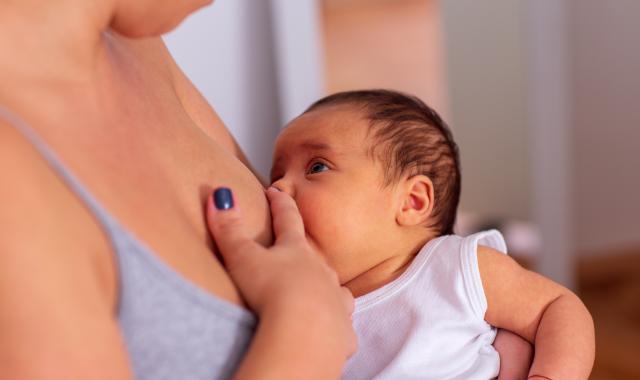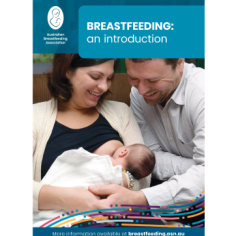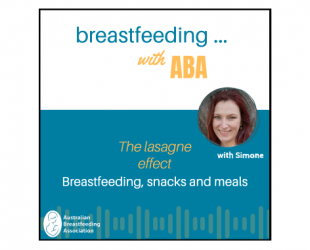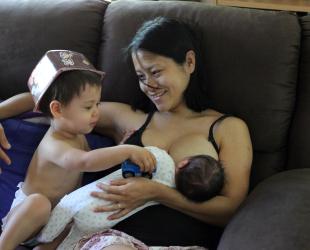Learn how long and how often babies feed and why patterns vary in the early months

Many mums wonder how long and how often their baby should feed.
In the early months, frequent breastfeeding is normal and helps your baby grow and your milk supply establish. Most young babies breastfeed 8–14 times or more in 24 hours. In the early days your baby might be satisfied or fall asleep after just one breast, then wake soon for the other. Over time they'll usually start taking both breasts at each feed.
Why babies feed frequently
Young babies have tiny tummies and breastmilk is digested quickly so they're soon ready for another feed. Responding to your baby's feeding cues, even if it feels like you've just fed, helps keep your baby satisfied and supports your milk supply.
Feeding more often can help you too: a content baby often means less time settling, and frequent removal of milk helps keep your breasts comfortable.
Many babies have periods of cluster feeding especially in the late afternoon and evening. This can look like repeated short feeds close together and is perfectly normal.
If your baby has a long stretch of sleep overnight, they may feed more often during the day to catch up.
How long do feeds take?
Some babies take their time feeding; others finish quickly. There is no need to time feeds. As you follow your baby’s dues, you’ll learn when they’re full or want more sucking time.
Feed lengths can vary, just as adults have bigger meals, snacks or drinks at different times. Sometimes your baby might want a quick feed; other times they may like to spend longer at the breast. They don’t have to take a ‘full’ feed every time.
A new baby may only remove a small amount of milk with each suck at first. As they grow and become more efficient, feeds often get shorter.
What about routines?
Many mums like the idea of a routine to help plan their day. However, strict schedules usually don’t work well for most young babies. They can make parents feel stressed and might mean missing your baby’s signs that they need a feed or comfort.
Offer the breast when your baby shows they are hungry or want comfort. This helps your baby grow, keeps them happy, and supports your milk supply.
Over time, most families find their own flexible pattern, even if it’s not the same every day. It’s okay if you don’t have a set routine in the early months. Watch your baby’s cues and do what works for your family—your own pattern will develop naturally.
Why feeding patterns change
Feeding can vary from day to day and over time.
- Babies may have fussy periods and want to feed more. Some prefer fewer, larger feeds; others take more frequent, smaller feeds.
- As babies get older, they may feed less overall.
- In hot weather shorter, more frequent feeds help babies get extra fluids.
- If your baby is unwell, in pain or upset, they may feed more - or sometimes less.
No matter how many feeds your baby has in a 24-hour period, the important thing is knowing they're getting enough milk.
Comfort and connection
Breastfeeding is not just food. Babies seek comfort, reassurance and connection with their mum. Cuddling your crying baby, feeding when they want, and breastfeeding to sleep can help many families feel calmer and more settled.
© Australian Breastfeeding Association October 2025
Find out more about getting breastfeeding started
Online interactive session free for members
Newborn Virtual Village - sleep and breastfeeding patterns in the early weeks

Evidence-led info and practical tips from our Breastfeeding Information Series
Breastfeeding: an introduction







